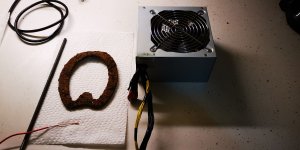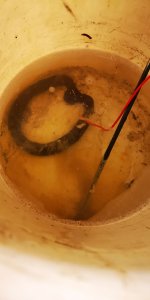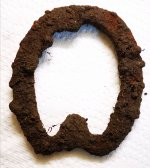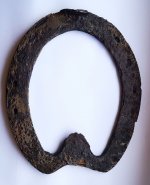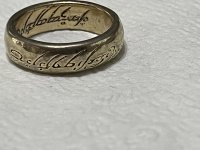diabolicalbeans
Jr. Member
- Oct 30, 2020
- 80
- 405
- Detector(s) used
- Garrett AT Pro
- Primary Interest:
- Metal Detecting
I found this neat old horseshoe the other day and decided I would attempt doing electrolysis using an old PC power supply, first I knocked some of the rust nodules off of it with a hammer, cleaned up a spot with a file and connected it all up the way I watched people do on YouTube, stuck it in a bucket with some water and baking soda and let the process begin! I'm excited to see how it turns out.


